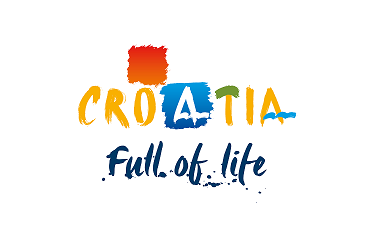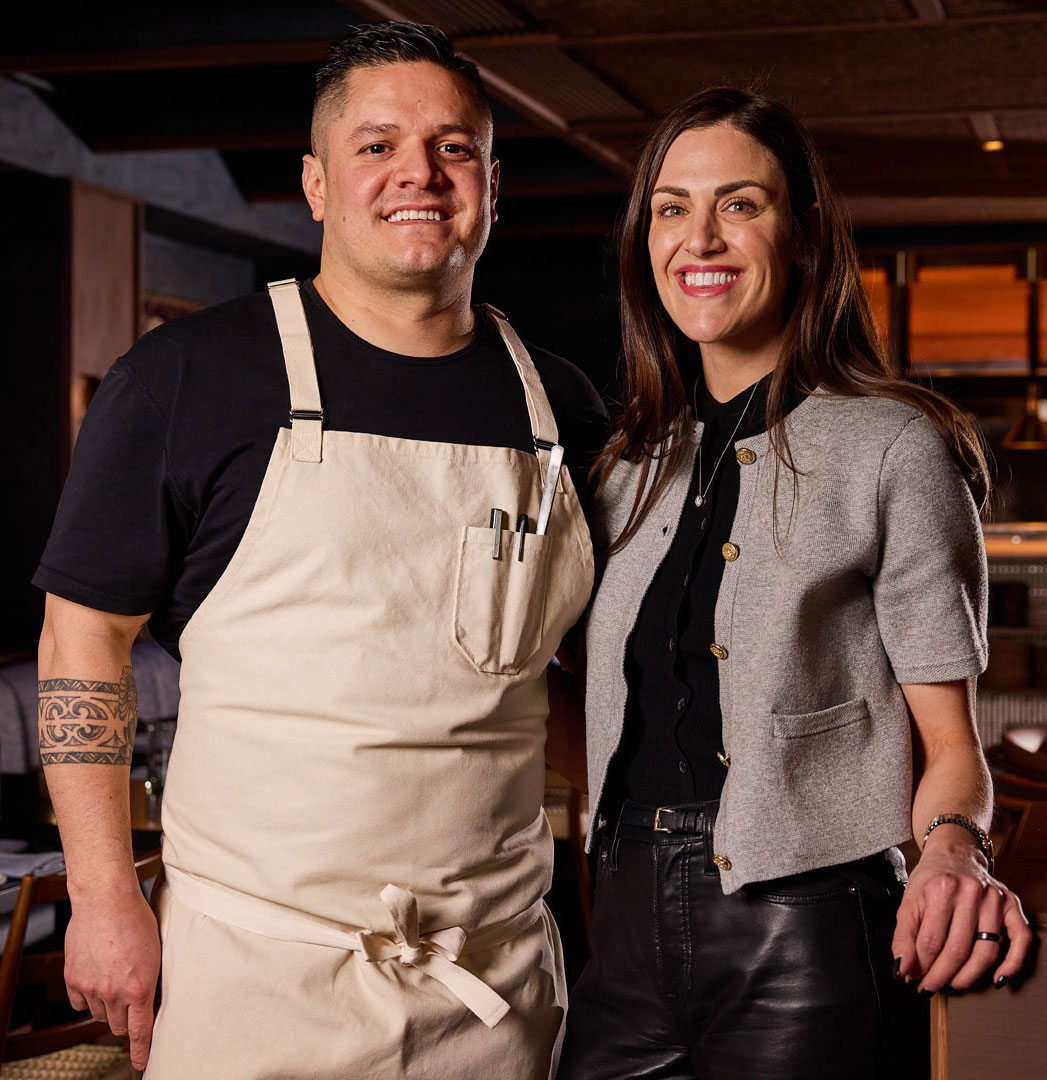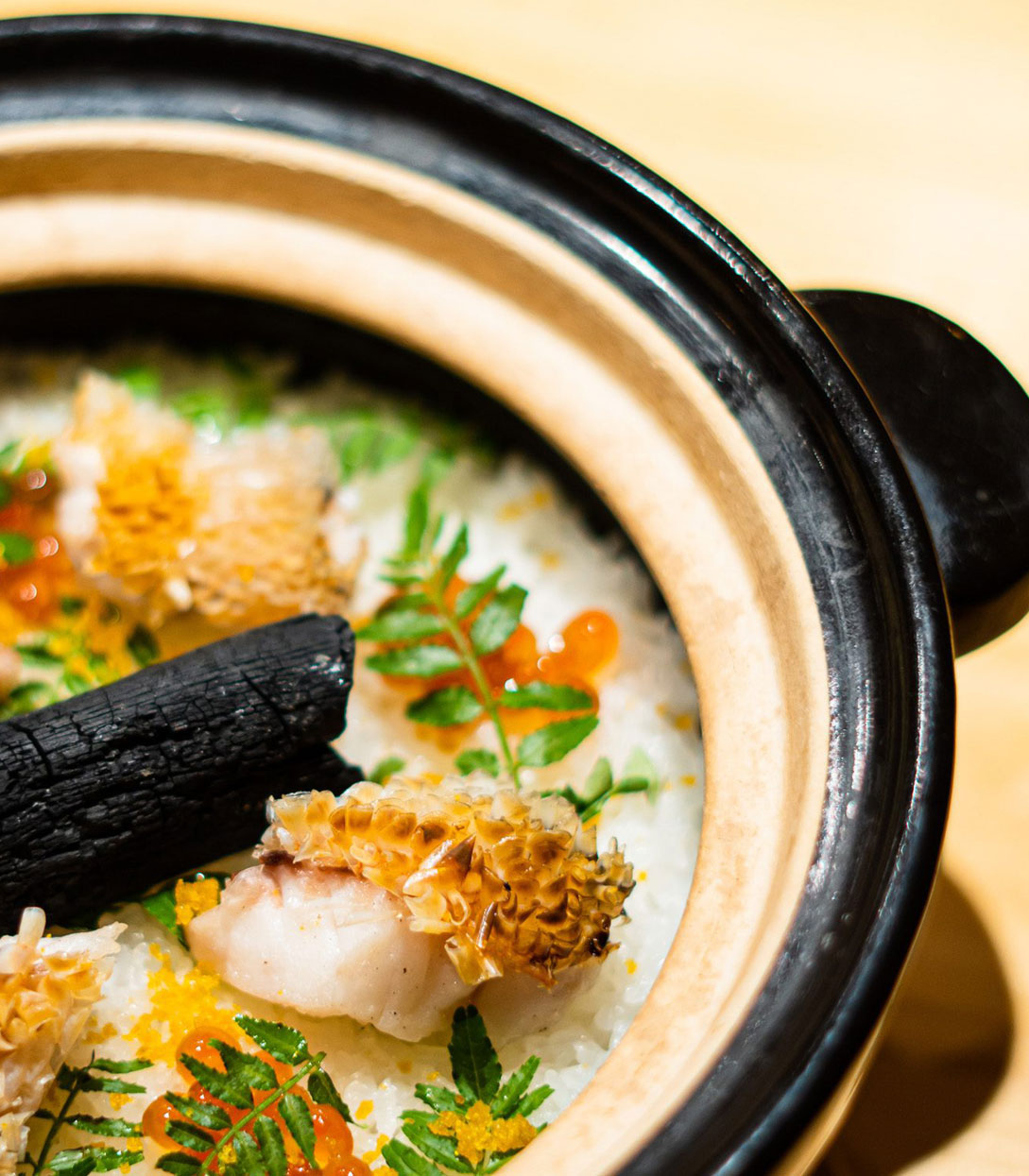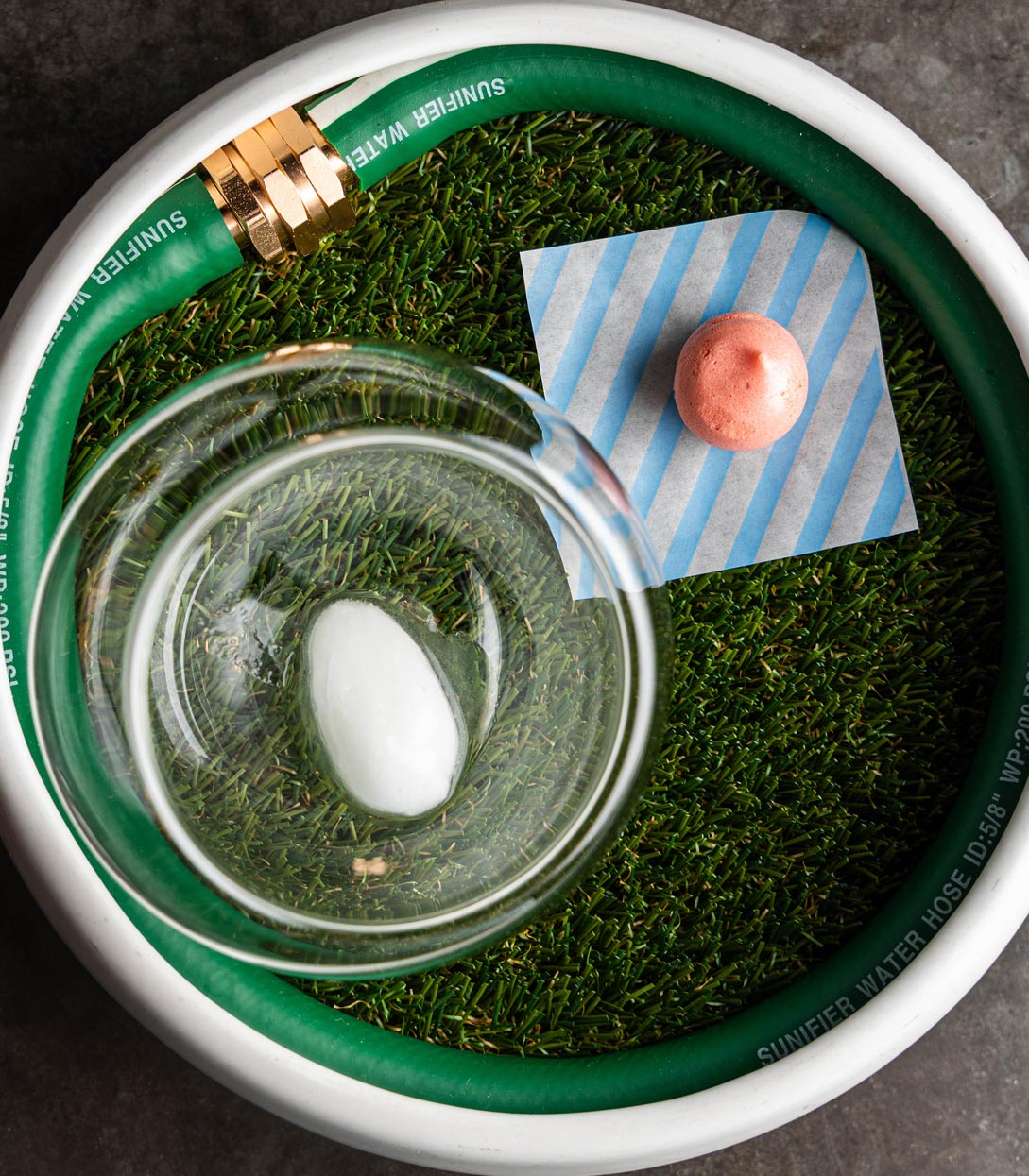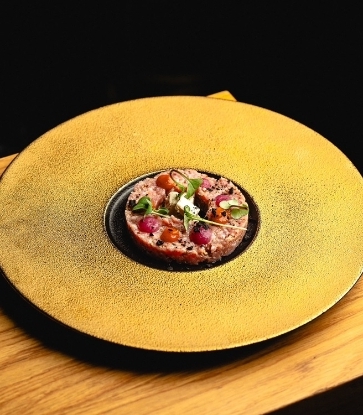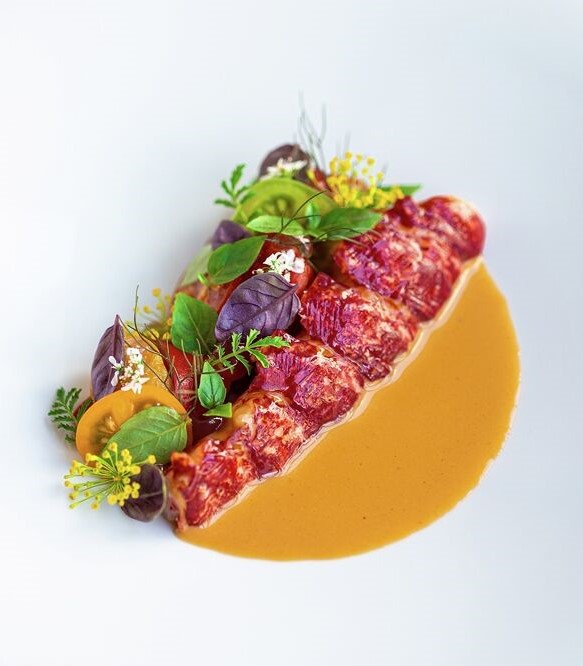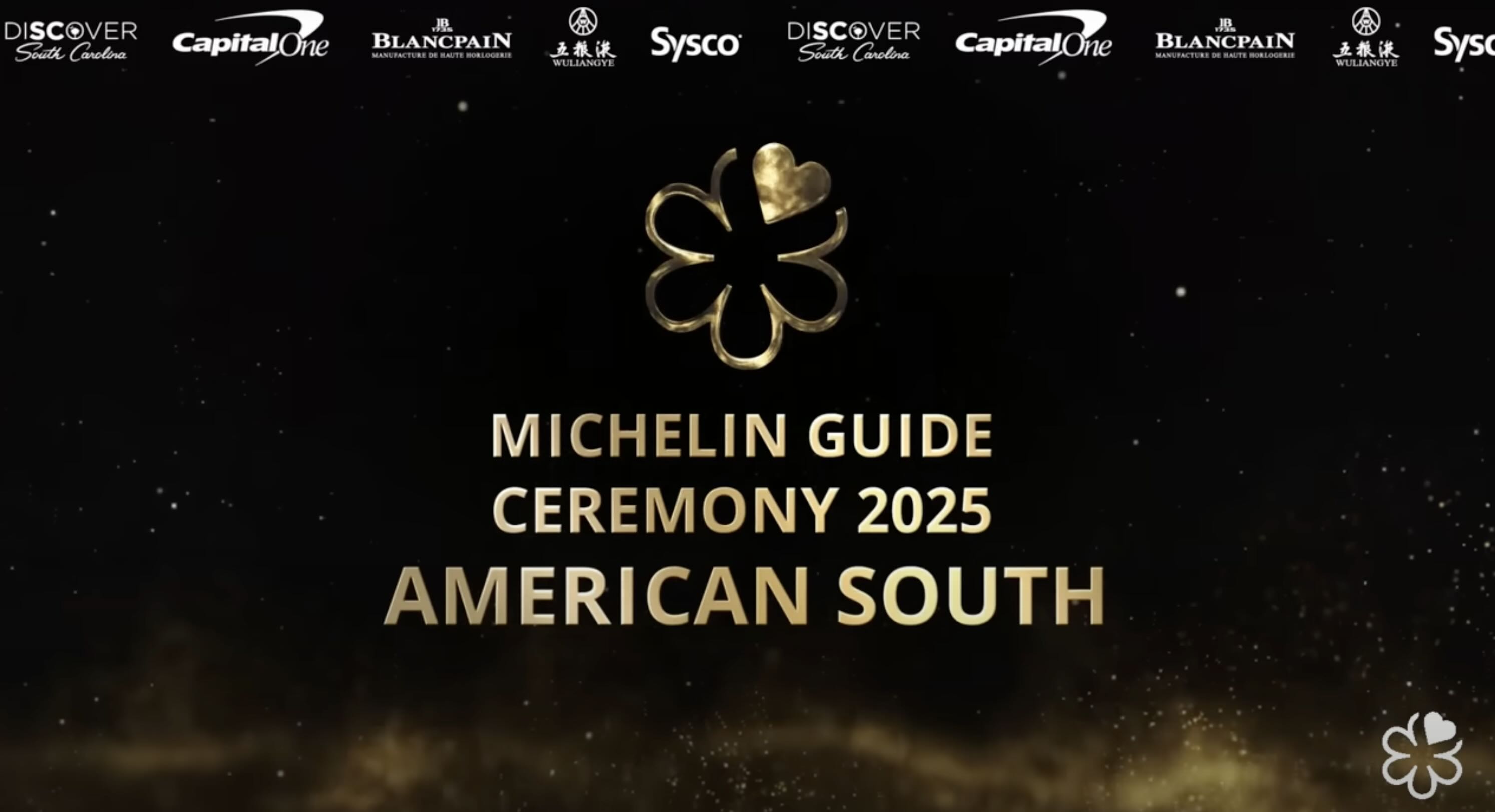Let’s start with wine. Produced from lovingly and carefully tended vineyards that extend over the gentle Istrian hills, the region’s wine is of the highest quality. One of the most popular varieties is Istrian Malvasia, whose refined aroma and fresh taste make it the perfect accompaniment for fish and seafood dishes. Other wines include Terrano and Refosco – traditional native Istrian varieties that have an attractive dark ruby colour, a fruity aroma and intense flavours which go well with delicious meat dishes – and muscatel, an amber-hued wine which evokes the warm sun of these southern lands. The quality of Istrian wines comes from a production method that takes full account of ancient wisdom while at the same time combining this with cutting-edge techniques, as well as the unique qualities of the soil, which is fertile and deep red near the sea and lighter in colour further inland. The country offers plenty of opportunities for itineraries that include guided tours of wineries with the option to taste local specialities.
Another of Istria’s delicacies is its extra-virgin olive oil, which the Ancient Romans appreciated so much that they exported it all around the Roman Empire where it was not only used in food but also for skin care and a natural remedy for sickness and ailments. If you are lucky enough to visit the unique Brioni National Park (comprising 14 different islands covering an area of 746 hectares), you’ll discover one of the oldest olive trees in the Mediterranean dating back around 1,600 years. This extraordinary tree demonstrates the importance of Istrian olive oil since Ancient Greek and Roman times, its excellent quality acting as a yardstick for oils from elsewhere in the world.
Year after year, Istria consolidates its position as one of the best olive-producing regions in the world, as demonstrated by its inclusion in the renowned international Flos Olei 2023 guide (now in its 14th edition). This year, this prestigious guide has included 56 Istrian olive producers, a particularly impressive result given that oils included in the guide come from a total of 56 olive-producing countries on all five continents.
As a result, Istrian olive-producers find themselves listed alongside the best 500 producers from around the world, making up a remarkable 11% of all the top-quality olive oils on the planet.
Among the producers recognised is Ipša, which is situated in the small hamlet of Ipši just 10 minutes from Oprtalj, a picturesque medieval village perched on top of a hill amid verdant landscapes. Here, we are just a stone’s throw from Slovenia and 200 metres above sea level in north-western Istria. The scenery is stunning, with small stone houses dotted around the hills, woods, plains and meadows and footpaths that allow food-lovers to explore the region’s food and wine producers. This region is particularly renowned for its truffles which flourish in Istria’s clayey soil. It’s no surprise, then, that truffles provide constant inspiration for chefs in the region’s best restaurants, who create starters, salads, main dishes and even desserts from this prestigious ingredient.

Amid these unspoilt landscapes, Klaudio Ipša has dedicated over 30 years to searching out the best truffles, an activity which he subsequently combined with producing olive oil. In 1998, together with his family and his wife Irena, he took over the restoration of a hundred mature trees and planted around a thousand new trees in order to provide olives for the future – a project which has seen excellent results. With love and enthusiasm, the Ipša family run a small farm amid the verdant Oprtalj hills and currently cultivate 17 hectares of olive trees which includes 4,500 individual trees, from which they harvest around 215 quintals of olives and just over 30 hectolitres of oil. One of the most prized olive oils in Croatia, Ipša oil includes four different types – three from a single species (namely, Frantoio, Leccino and Istrian Bjelic), and one a high-quality blend.
Each of these oils has its own particular characteristics. Leccino, a golden green colour, has a hint of bitterness and spiciness with a more complex character that is pleasantly rounded, fruity, fresh and elegant. It is the perfect accompaniment to raw fish dishes, as well as white meat, young cheeses and a wide variety of fresh cheeses.
Frantoio, in contrast, is a deep-green olive oil with a more obviously spicy flavour and hints of fresh olives, artichokes, basil and rosemary. Thanks to its strong and intense characteristics, it is excellent with strong flavours such as seasoned cheeses, wild asparagus, oily fish, grilled vegetables, meat, game and truffles. Ipša’s Frantoio olive oil is the company’s most successful oil in terms of awards, having been named one of the 20 best olive oils in the world by the Flos Olei guide in 2011 and 2017. And if you can’t decide which of these oils to choose, our advice is to try them all!
Among the stand-out olive-oil producers on the Flos Olei guide’s “The Best” list is Mate in Savudrija-Salvore, chosen as “Producer of the Year”. “Our soil is our future”, says owner Mate Vekić who has always carefully picked his olives by hand before pressing them immediately to maintain their quality and flavour. In this region, cultivation of olives had long been abandoned because of frosts and the region’s dramatic historic events, but the industry has now been given a new lease of life thanks to Mate Vekić, who planted a total of 25,000 olive trees towards the end of the last century. Vekić was 75 years old when he decided to dedicate his life to producing olive oil. His love for olives began in Italy – in Tuscany, to be exact – where he spent some of the happiest years of his life. Fascinated by Tuscany, he decided to create an olive grove in his much-loved Istria, where he planted Frantoio, Leccino and Pendolino varieties. More recently, Mate has turned his attention to some of the older native varieties, such as Buža, Istarska Bjelica and Karbonaca. On his farm in Zambrattia, he produces olives with a focus on respecting nature and the environment, maintaining a balance between the needs of the plant and the potential of the soil in order to produce extra-virgin olive oil of the highest quality.
His olive press uses cutting-edge equipment to produce top-quality olive oil, allowing for an extraordinary speed of production – olives picked during the day are transformed into oil by the evening.
One of the company’s leading products is its Bianca Bellezza oil, produced from Bianchera olives. On the nose, it is intensely fruity, green and fresh with complex scents of freshly cut grass, tomato leaves and fresh almonds. On the palate, it is initially delicate, developing into bitter and spicy flavours which are persistent, harmonious, elegant and finely balanced. The fresh notes of almonds, freshly cut grass, chilli pepper and artichoke are dominant.
Also worth trying is Trasparenza Marina, made from Leccino and Pendolino olives. On the nose, the oil is green, fresh and fruity with scents of almond and fresh hazelnut and hints of green banana. The sweet taste slips into a slightly bitter finish, creating a perfectly harmonious flavour, while its end notes evoke sweet fresh dried fruit and white pepper with pleasant undertones of cardoon.
Timbro Istriano, produced from Frantoio olives, is also interesting. On the nose, it is intensely fruity, green and fresh with scents of grass, almonds, bananas and spices. On the palate, sweet and bitter flavours combine in perfect balance, resulting in an explosively spicy finish which is extremely elegant and harmonious. The flavours evoke memories of green banana, fresh almond and hints of artichoke, with a mischievous sprinkling of black pepper.
Another not-to-be-missed producer is Chiavalon, the company founded by brothers Sandi and Tedi Chiavalon who keep their family tradition alive with real professionalism, passion and enthusiasm. Their olive groves cover 32 hectares in which 9,200 trees produce around 800 quintals of olives. Their excellent blend which combines Busa, Bianchera, Carbonazza, Rosingola and Morasola varieties has a deep green colour, with dominating notes of wild chicory, green apple, artichoke, freshly cut grass and tomato. This oil is characterised by its rich balsamic tones of mint, rosemary and sage enhanced by subtle hints of almond. On the palate, the oil has a full flavour with strong and yet harmonious notes of both bitterness and spiciness.
Another leading producer is Olea B.B., one of the country’s major names in top-quality olive production. Founded and still run by Bosiljka Belić, this company boasts cutting-edge headquarters and a 12-hectare olive grove in which around 500 quintals of olives are harvested from 4,500 trees. There are four different olive varieties here: Leccino, Ascolana Tenera, Rošulja and Buža, the last of which produces a beautiful, deep golden yellow oil with hints of green. On the nose, this oil is full and enveloping, combining fruity scents of apple, banana and tomato with added herbal hints of basil, mint and parsley. Lively and full of character, the oil also reveals vegetable tones of lettuce and celery on the palate.
It's impossible to talk about the region’s food specialties without mentioning dry-cured ham, a real symbol of Istrian gastronomy. This food product is so precious that it was once used as a form of payment (for the doctor, lawyer, vet, etc) and became a common form of “money” for numerous eventualities. Ham has always been one of the main food items at any feast or special occasion and it retains its importance in the region’s food culture today. We only have to think of the legendary “Istrian violin” which slices ham with the same grace and elegance as a musician plays its namesake. The thin blade creates small slices to begin with, which become bigger and bigger as the ham is cut, revealing a deep red colour and enticing aromas.
Istrian dry-cured ham is made without the use of nitrites, nitrates or smoke. It is seasoned for twelve months before being cut – always by hand and never with a slicing machine.
Istrian ham specialists include OPG Franjul Ljubica, OPG Mekiš Moreno, OPG Pršuti Milohanić, Pisinium, Pršutarna Compari, Pršutarna Antolović, Pršutarna Buršić and Pršutarna Jelenić.
One of the most famous is the prize-winning Pršutarna Dujmović in the village of Kringa in Tinjan, one of the first companies to register a trademark in Istria, back in 1998.
This company works exclusively with Croatian pig farmers who raise their animals until they are a year old – at this age the pigs weigh between 160 to 200kg, which produces prosciutto weighing 16-20kg and a finished product of between 9 and 11kg. The supply chain is fully traceable and is recognised with a stamp branded on each of the company’s products. Seasoning takes place in completely natural conditions in which air is constantly circulating in this central region of Istria, north winds blow in from the Učka mountains and southerly winds from the sea, which gives the ham a very special quality. The company’s many awards include a gold medal from the ISAP 2008 International Fair held in Tinjan in 2008 and a gold medal from the Sinj National Fair of Prosciutto Ham and Dry-Cured Meat Products from 2008 to 2011.

What better accompaniment for this delicious ham than a slice of cheese? And when it comes to cheese, Istria is also home to many excellent products, including typical varieties made from goat, sheep and cow’s milk.
The production of top-quality cheese is made possible by the region’s extensive pastureland, which produces healthy feed that in turn leads to healthy and delicious milk. There are many different types of cheese in Istria, which you’ll find on menus as starters, main courses and desserts, as well as simply as a tasty snack. The most interesting dairies include Agrolaguna, Milk & Cheese Bar Latus, OPG Alen Peršić, OPG Macan, OPG Radošević, OPG Sia, Stancija Guran, Poljoprivredna proizvodnja i stočarstvo Majcani, Sirana Buretić, Sirana Orbanić, Sirana Zlata, Stancija Kumparička, Stancija Špin, and Vesna Loborika.
Another of the region’s abundant specialities is Istrian honey. Here, everything starts in April with bees producing honey from fruit trees and dandelions until May. After that, beekeepers move their hives in search of acacia trees which produce a top-quality honey that is truly delicious and one of the most popular of all honeys. This “honey journey” continues in June, when the hives focus on sweet chestnut blossom. Towards mid-September, the bees return home to gather pollen from heather and other flowering plants.
The most interesting honey producers in Istria include A&Ž Med, Api Melon, Api Pilaj, Dantinjana, Medea, Gabrijela Valenta, Vežnaver, OPG Zugan, Remedy, Joakim Ružić, Terzolo, Pčelarstvo i apiterapija Radulović, Štoković Pčelarstvo, Florijan Radičanin, OPG Pčelarstvo Licul, Anđelini, Benazić, Brajković, Gržetić, Hrvatin, Pinici med and OPG Sebastijan Marić.
Meanwhile, the organic cultivation of fruit, salad and vegetables is becoming more popular in Istria thanks to excellent producers such as OPG Farina, Višnjan-Visignano d’Istria, OPG Chiavalon, Vodnjan-Dignano, OPG Dorijan Siljan, Pula-Pola and the OPG Siljan organic farm at Valbonasa, 4km south of Pula.

https://guide.michelin.com/hr/en/istria/buje/restaurant/lucianoThe delicious flavours of all these top-quality ingredients are of course enhanced by the careful and attentive work of Istria’s chefs. One of the most interesting places that showcases local produce is the Luciano restaurant (part of the San Canzian Village & Hotel) which takes its name from one of the suppliers of authentic Istrian produce. Locally sourced ingredients of the highest quality, many of which are produced organically, take pride of place on the menu at this restaurant, where the chef reinterprets traditional Istrian dishes, such as “maneštra” stew, traditional home-made “pljukanci” pasta and truffles in season, with an innovative touch.
“Our philosophy rests on choosing the best local ingredients and transforming these in a contemporary way, so that we showcase the ingredient’s authentic flavour through the use of sophisticated culinary techniques”, explains Bruno Šarić, General Manager at the San Canzian Village & Hotel. “For us, the ingredient is always the star of the show, and we are committed to a simple approach. We source our ingredients from small producers in our local area – farmers, breeders and artisans who work with fresh, seasonal produce. Another cornerstone of our philosophy is our commitment to reducing food waste”.
“We should emphasise that Luciano Restaurant & Bar is situated in Mužolini Donji, a small medieval village in the north-western part of Istria that lies halfway between the towns of Buje and Krasica. Throughout history, this area has been the gastronomic hub of the region, home to numerous wineries and producers of olive oil, dry-cured ham, cheese and truffles, all of whom keep old traditions alive with passion and enthusiasm. The menu at Luciano Restaurant & Bar focuses on locally sourced ingredients such as asparagus and strawberries in spring, local maize, pecorino curd and milk, aromatic fennel and sorghum. We also have our own kitchen garden where we grow tomatoes, peppers and courgettes. We respect all our ingredients by only using appropriate techniques in their preparation so that their natural characteristics – colour, taste, texture and nutritional value – shine through. Tradition, zero-mile produce, reduction of food waste, seasonal ingredients, a contemporary approach and creativity are our guiding principles”.
“Although we don’t produce our own wine, we maintain close connections with local Istrian wineries and we have a vast number to choose from”, Bruno Šarić continues. “However, we’re very proud of our olive oil, which we do produce ourselves (around 6,000 bottles) and which we use on our restaurant menus or at tastings for our guests.”

“Our oils include San Canziano, a blend of 55% Leccino, 20% Istarska Bjelica, 15% Frantoio and 10% Pendolino varieties. We harvest the olives by hand in October. The oil has a balanced and elegant taste, with a harmonious mix of spicy, bitter and fruity flavours and is particularly good with salads, on raw fish and with fish specialities, as well as with semi-seasoned cheeses, shellfish and white meat. We also grow San Canzian Frantoio olives, an Italian variety that is originally from Tuscany and has been cultivated here in Istria since the 1940s. The olives ripen between October and December and have a very intense flavour with scents of raspberry and aromatic herbs. This highly valued variety has a light green colour, with a fruity aroma and dominant flavours of green olive, almond and aromatic herbs, plus a pleasantly strong and spicy finish. Finally, we have the native Istrian San Canziano Bianchera variety which comes from the region of Trieste. This is an olive variety which can withstand low temperatures as well as the strong north winds. As the olive ripens, it changes colour from a greenish yellow to a reddish hue with a purple tinge. The final result is an oil with a fresh scent that evokes green olives and freshly cut grass, while the flavour is spicy and bitter – the perfect choice for anyone who likes strong flavours. Our work as a producer makes us aware of every single stage of our ingredients’ journey from soil to plate”.
“We take great care to inform our guests that our entire menu is based exclusively on local ingredients”, concludes Šarić. “In terms of traditions, I should mention that our use of spices and fruit reminds us that Istria was once closely connected to Venice – the Istrian peninsula was, in fact, part of the Venetian Empire for over seven centuries. Spices were brought here by explorers who favoured the cultivation of different types of citrus fruit. As I have already mentioned, we are proud of our past, we respect it and enjoy interpreting it in new ways so that it can remain an essential part of our cultural and culinary future”.
Now that you are familiar with Istria’s culinary treasures, why not plan a trip to this fascinating region? We’re sure that this will prove to be just the first of many Istrian adventures thanks to the superb restaurants, delicious local ingredients, breathtaking scenery and beautiful natural landscapes that await in this delightful corner of Europe.
llustration image: Luciano - San Canzian, Buje - Hrvoje Serdar
